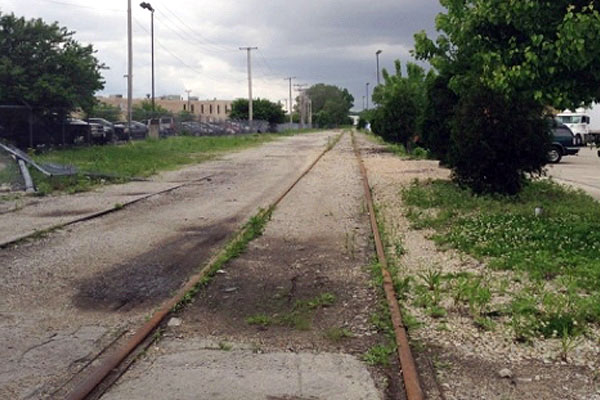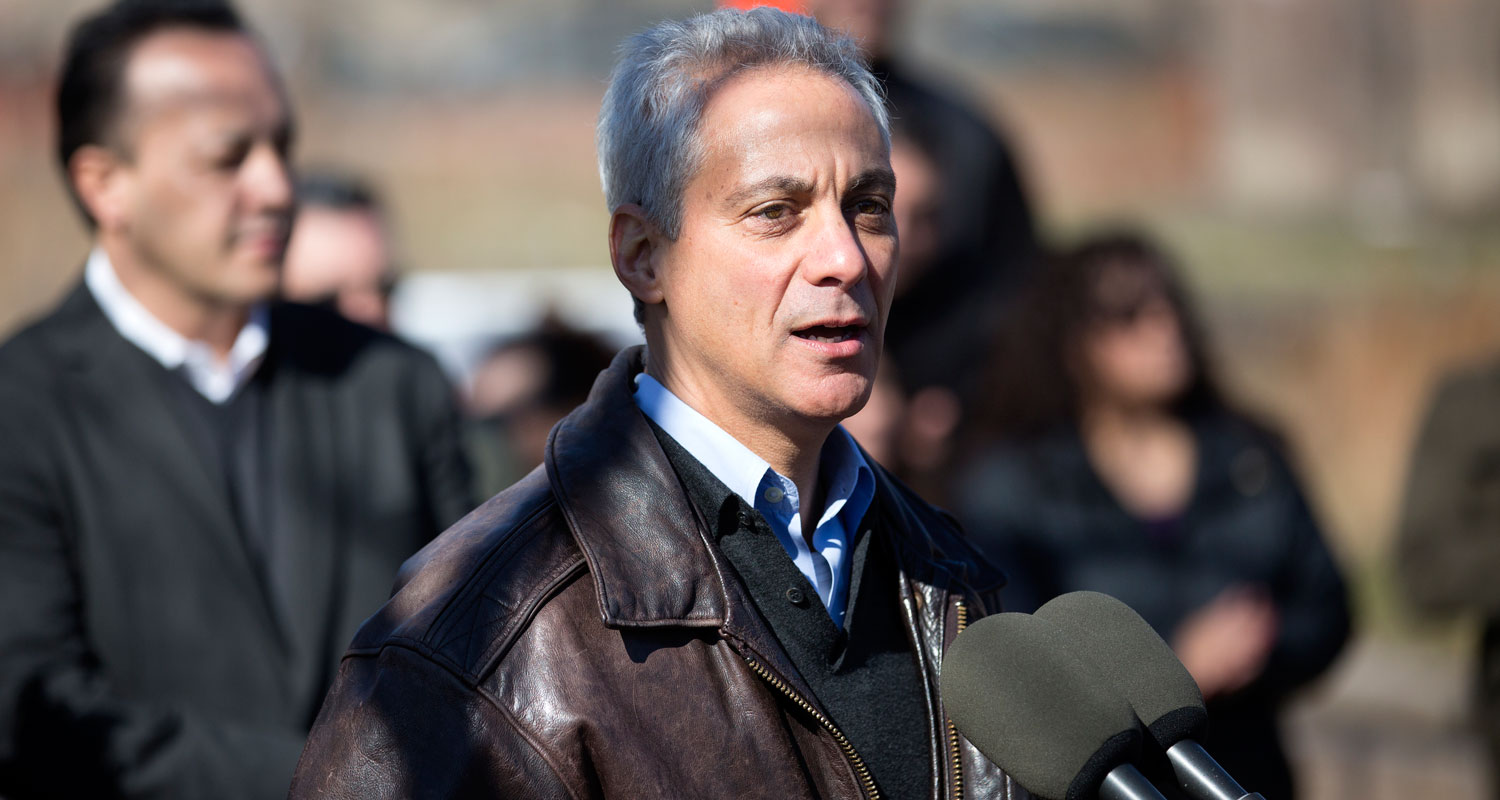Photo: Erin Hooley/Chicago Tribune
Three years ago, the city announced what was intended to be one of the mayor's legacy projects—the Chicago Riverwalk. "It could be one of the most exciting urban passages in the world, our Champs Élysées," Phil Enquist, head of city design at Skidmore, Owings and Merrill, told me.
But Enquist advised not stopping there. Using London's less famous Thames Path as inspiration, Enquist suggested Chicago look beyond its spectacular canyon of supertalls and redevelop its industrial river corridor. In 2016, the city making a big move in that direction with Building on Burnham, a plan to invest in the lakefront, river, and other natural areas in the city.
Advertisement
"Building on Burnham is to make both waterways in a way that [Daniel] Burnham could never see," Rahm Emanuel said in an interview this week. "You go back 100-plus years, Burnham couldn't see the river but as an industrial highway. When you include the Calumet, Chicago's river is a longer waterway than Chicago's lakefront. The idea we have is that, about every mile, there will be some public access, some recreational use. When you think of the lake, that's our front yard; this is our backyard, the spine of the city."
Among the new Building on Burnham projects is the TIF-funded Paseo. After an environmental cleanup funded by the Burlington North Santa Fe railroad, the Paseo will convert four miles of old railroad track into a multi-use path connecting Pilsen to Little Village, running roughly parallel to the South Branch of the Chicago River. It’s something of a synthesis of the city's newest major public spaces, the Riverwalk and the rail-to-trail 606 project.
"There is a common theme if you go through the river, Paseo, 606, Northerly Island, Maggie Daley [Park], the Big Marsh in Calumet. These are old, mid-20th century industrial transportation systems," Emanuel said. "The river was our industrial highway. The 606 was a railroad track. Paseo was a railroad track. Northerly Island was a commuter airport. What we've done, as a common theme, is look at these old forms of transportation that are out of use, and reinvent them as public spaces."
The Paseo is already being described as "Pilsen's 606," but unlike the 606, it's at-grade rather than rising above the city. This means it won't skip road crossings, but it could be an improvement for commuters nonetheless.

For an appraisal I turned to Jana Kinsman, a Pilsen resident and the owner of Bike-a-Bee, a network of beehives around the city that Kinsman tends via bicycle.
"I'm excited, of course," Kinsman said. "I grew up next to the Prairie Path in Wheaton. It’s at grade level. It’s the same with the North Shore Channel Trail. The 606 is the exception. Beggars can’t be choosers when it comes to bike infrastructure."
Advertisement
The Paseo would separate cyclists from cars. But it would also take cyclists off the road completely in an area that's still industrial—and industrial means trucks, and trucks, because of their weight, often mean more damaged streets. It's not quite the elegant solution that the 606 is, but it will have its benefits.
"If I need to get west to go to Little Village/Douglas Park, everything is chopped up; there are lots of turns, the blocks aren’t complete," Kinsman said. "The road under the viaduct is terrible. Cermak’s like a four-lane highway. Any rails to trails are great. I’m happy to see that South Side neighborhoods are not being overlooked."
As with the 606, gentrification is already a concern, as John Greenfield reported in the Reader. It's an especially thorny issue with parks: how to balance the goal to improve the neighborhood for its residents with a free, publicly-funded amenity against the realization that improvement can lead to displacement. And, like the 606, the Paseo will be built in neighborhoods that are already grappling with an outflow of residents. (The shift from Pilsen and Little Village to far-southwest neighborhoods is recognized as one of the big migrations within the city.)
"I don't think you have to see it as a net loss," Emanuel said. "There's going to be qualitative improvements, I get that, but we have other resources available to still help people. People want to see improvements in the home that they built, and they don't want to be priced out. Our goal is to have things that cushion that process and help people make the adjustments they need to."
Further south is another expansion that brings up-north ideas down south: five "gathering spaces" along the Burnham Wildlife Corridor, the 2.2-mile, 103-acre strip between railroad tracks and Lake Shore Drive from 31st Street to 47th Street. The city chose five plans from local nonprofits in Pilsen, Chinatown, and Bronzeville to receive $20,000 grants from the Park District to design the spaces, resembling the artistically-centered spaces that break up the 606 and North Shore Channel Trail.
Advertisement
It's a patchwork, and so is the money. The Burnham Wildlife Corridor has both a funding source and an estimated cost; the Paseo is planned with TIF money, but the estimated cost is still to be determined. There are dots to connect there, too.
"When you're done with what we're doing across the city, you'll find many different sources," Emanuel said. "Public. Private. Not-for-profit. Individual family resources. There'll be capital from the park district, TIF dollars, private-sector corporate money. There'll be family money, foundation money. Jeannie Gang's boathouse [in Clark Park] was WMS industries, across the river; they funded a piece of that boathouse. We're committed to getting it done."




